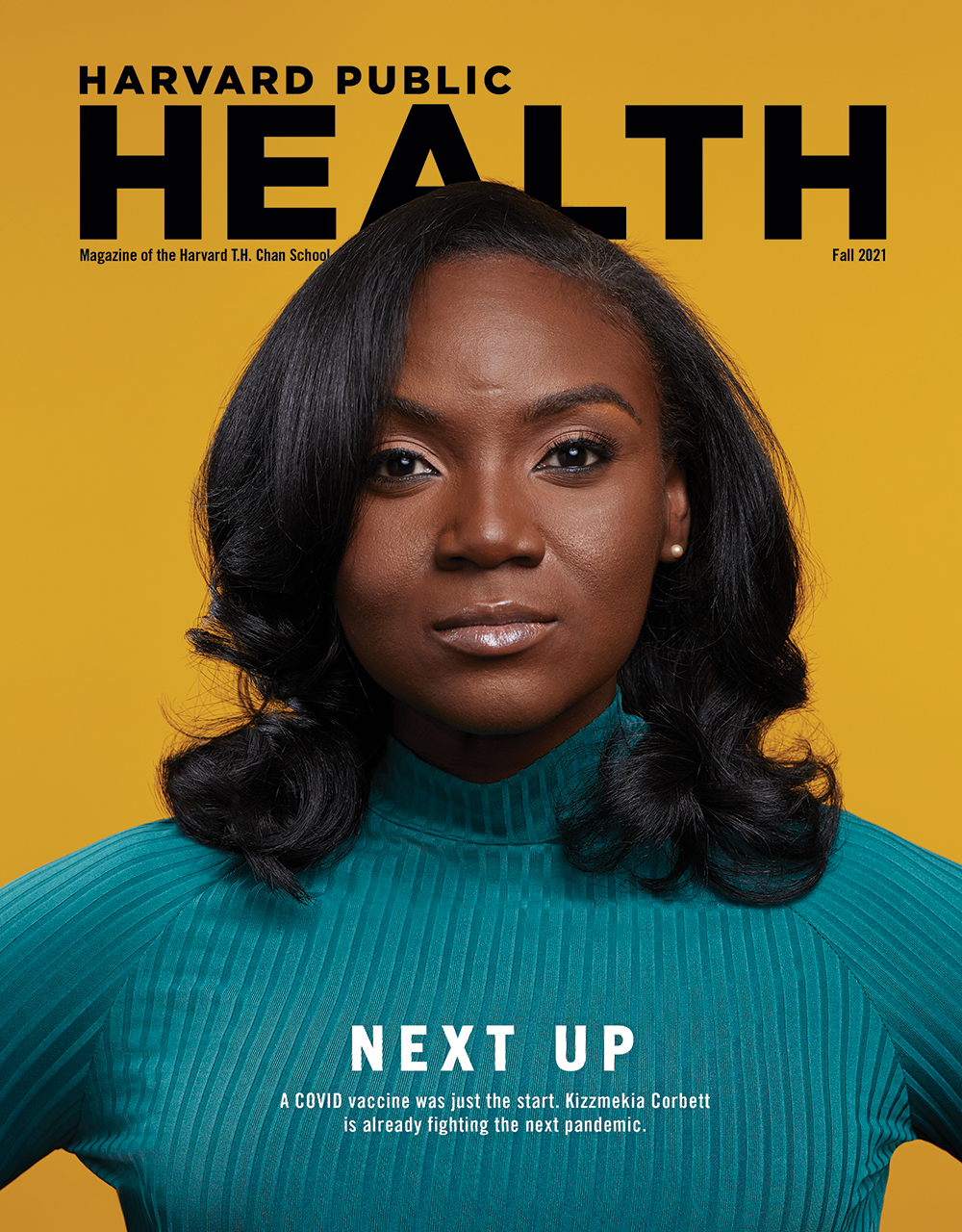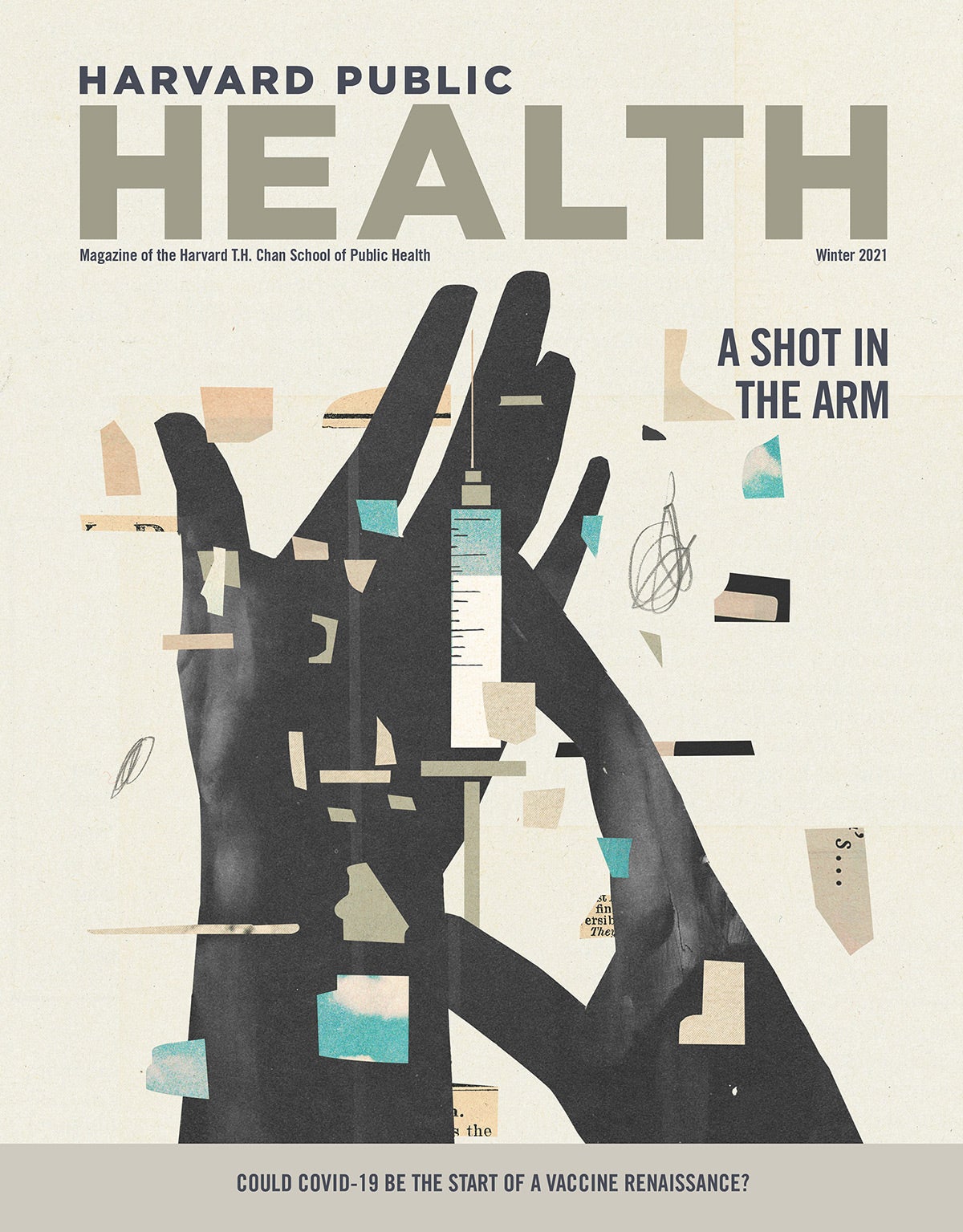John Quackenbush, Henry Pickering Walcott Professor of Computational Biology and Bioinformatics; Chair, Department of Biostatistics

“In science, you have to turn over a lot of rocks to find truth,” says John Quackenbush. Recently, he and his colleagues have been turning over a boulder of faulty assumptions about how sex differences affect disease risk and progression. Men and women diverge not only in their vulnerability to many diseases but also in the way their bodies respond to drug treatments. The implications of this sexual dimorphism could shape clinical medicine and the scientific process itself. Quackenbush discussed his recent research with Madeline Drexler, editor of Harvard Public Health.
Q: In which diseases do male/female differences show up most?
A: Many different cancers, cardiovascular disease, autoimmune disorders, asthma, even infectious diseases differ. One of the most interesting is Alzheimer’s disease. Two-thirds of Alzheimer’s patients are female. Even if we correct for the fact that your being female means you will likely live longer than I will, you still have twice the lifetime risk. Even if we both carry a mutation in the gene called APOE, which is associated with Alzheimer’s, your being female means you will still face twice the risk.
Q: Are these differences mainly due to hormones?
A: A lot of the work that we’ve done over the years has pointed to genes that respond to hormones. But when we look at which genes are turning on and off in the disease process, we don’t necessarily see strong differences between males and females. So, we asked: What are the upstream mechanisms that are turning these genes on and off?
We have found in many diseases, and in healthy tissues, that biological networks differed in some important ways between men and women. In comparing colon cancer between the sexes, we found differences in a network that controls genes involved in drug metabolism and drug response. That’s really interesting, because in colon cancer, men and women tend to respond differently to chemotherapy. What’s exciting about our finding is that it suggests that we should investigate how to subtly alter these networks to increase the chances that a patient, male or female, responds to therapy in a way that improves response and decreases side effects.
“Twenty years in the future, our models of human disease won’t be perfect, but they will give us a better ability to predict disease risk, disease trajectory, and optimal therapies for any individual patient.” —John Quackenbush
Q: Historically, hasn’t most basic biological research and even clinical research been conducted on male subjects?
A: A lot of animal research gets done in males. A big part of the reason is that researchers want to try to remove the female reproductive cycle as a variable. Today, to get a clinical study funded, you have to include both males and females, or provide a justification for focusing on only one sex. But even if you’re looking at both sexes, most analyses of the data have not taken sex into account or have not done a stratified analysis—separating the men and women and analyzing the results separately. So you could imagine a drug that on a population level might not show a significant effect—but in a stratified analysis might prove to be more effective in men than in women.
Q: How might your research play out in medical care 20 years from now? Will precision medicine become even more precise, based on the sex of the patient?
A: Precision medicine has gotten more complex. And rather than shy away from this complexity, the future of health care is going to be won by those with the courage to embrace complexity. We’re trying to build statistical, computational, quantitative methods that will give us better insights into the drivers of disease. Twenty years in the future, our models of human disease won’t be perfect, but they will give us a better ability to predict disease risk, disease trajectory, and optimal therapies for any individual patient. And one of the things we will integrate in these models is the sex of the patient.
Q: If women had been better represented in biological research and in clinical medicine over the last few decades, might these questions and insights have surfaced earlier?
A: When I look at my career and I’m honest, I realize that the best ideas I’ve developed have come when my trainees, my students, and my postdocs challenge my assumptions. Today, the people in my research group come from diverse scientific backgrounds. I’ve had mathematicians, statisticians, biologists, computer scientists, physicists, chemists, chemical engineers—all of whom wanted to get involved in health and biomedical research. They come from all over the world and they represent both sexes. If I were to make a guess, the female/male split among my trainees over the years has been about 60/40.
The thing I love about having so many people from so many backgrounds participate in the scientific enterprise is that they bring different perspectives. So, yes—if, 20 or 30 years ago, there had been a greater representation of women in biomedical research and clinical practice, we probably would have asked these questions sooner. As we diversify our scientific teams, we will all do better science.







